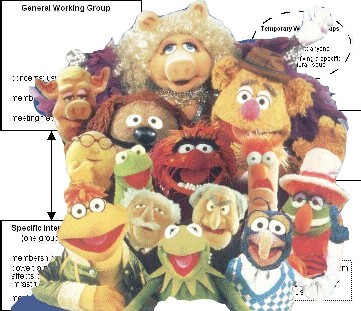Group Dynamics
Group dynamics refers to a system of behaviors and psychological processes occurring within a social group, or between social groups. Intragroup dynamics (also referred to as ingroup-, within-group, or commonly just ‘group dynamics’) are the underlying processes that give rise to a set of norms, roles, relations, and common goals that characterize a particular social group.
Amongst the members of a group, there is a state of interdependence, through which the behaviors, attitudes, opinions, and experiences of each member are collectively influenced by the other group members. Group formation starts with a psychological bond between individuals. Through interaction, individuals begin to develop group norms, roles, and attitudes which define the group, and are internalized to influence behavior.
Group cohesion refers to the processes that keep members of a social group connected. Terms such as attraction, solidarity, and morale are often used to describe this. Group cohesion is thought to be one of the most important characteristics of a group, and has been linked to group performance, intergroup conflict and therapeutic change.

When we talk about group dynamics or group process, we can start defining a group as a number of people that are located, gathered or classed together.
To be more specific, a social group is people sharing some social relation and has collectively a sense of unity; two or more people who interact with one another, exhibit some degree of social cohesion. Their members share some characteristics that may include interests, values, representations, ethnic or social background, and kinship ties (social bond based on common ancestry, marriage, or adoption). In a similar vein, some researchers consider the defining characteristic of a group the social interaction.
Renowned social psychologist Muzafer Sherif formulated a technical definition with the following elements: “A social unit consisting of a number of individuals interacting with each other with respect to:
-
Common motives and goals
-
An accepted division of labor, i.e. roles
-
Established status (social rank, dominance) relationships
-
Accepted norms and values with reference to matters relevant to the group
-
Development of accepted sanctions (praise and punishment) if and when norms were respected or violated”